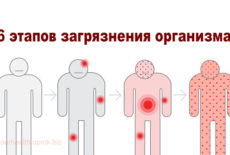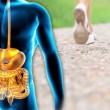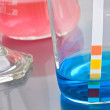Anti-inflammatory and rehabilitation program for women
 The program of restoration and preservation of health developed by the Academy of Health Coral Club. Based on the book O.A .Butakova «Compendium of health programs.»
The program of restoration and preservation of health developed by the Academy of Health Coral Club. Based on the book O.A .Butakova «Compendium of health programs.»
Nutritsiological and rehabilitation programs developed by doctors of various specialties and are based on the natural means of the highest quality.
Vitamin E (Vitamin E Clusters) – 1 tablet 2 times a day with meals. Takes an important part in all the processes occurring in the reproductive system.
Phycotene (Fikoten) – 1 capsule 2 times a day for 30 minutes before eating.
Papaya (Papaya) – 1 tablet 3 times a day after meals, chewing slowly. Has a rejuvenating effect, restores the immune system, has a resolving and anti-inflammatory action has gipoallergiziruyuschy effect.
Pau D’Arco Bark (Pau D’Arco tree) – 1 tablet 4 times a day after meals. Has a broad spectrum antibacterial, antiviral, antifungal action.
Coral lecithin – 1 capsule 2 times a day with meals, morning and evening. Takes an important part in all the processes occurring in the reproductive system.
Combination four (Set of grass number 4) – 1 tablet 2 times a day during meals with a glass of water or dissolving tablet in a glass of hot water. Has a harmonizing effect on the female body. The herbs included in its composition, improve hormonal and libido, normalize the menstrual cycle and reduced other functions of the reproductive system.
Coral Mine (Coral-Mine), Coral water, coral calcium – one bag to throw in a glass enclosed vessel with a capacity of 1.5 – 2 liters of drinking for 15-20 minutes before meals and 1 – 1.5 hours after eating. Drink during the day. You can drink capsules, tablets and powders. Aimed at maintaining optimal body water balance. Has improved biological properties ( low surface tension, slightly alkaline pH levels, contains about 70 essential minerals, macro -and microelements in digestible form and optimal ratios, cleaned of chlorine and toxic substances ), meets the needs of the body’s cells. Water has an ordered structure of atoms becomes bioavailable digestible.
Female reproductive system – a delicate mechanism of the periodic process called menstruation.
It creates the menstrual cycle of the woman prerequisites for reproduction.
Bodies of the female reproductive system are the ovaries, fallopian tubes, uterus, vagina.
 Functioning of the reproductive system
Functioning of the reproductive system
Distinguish 5 levels of regulation of the reproductive system:
- The cerebral cortex – produces neurotransmitters – substances which have a direct impact on the functioning of the following levels.
- Hypothalamus – the brain department, where synthesized so-called releasing hormones, ie hormones that regulate the production of pituitary hormones.
- Pituitary gland – a kind of process of the brain, where releases hormones that are responsible for the functioning of the endocrine glands and the whole organism. It was there that produced gonadotropic hormones – luteinizing (LH) and follicle stimulating hormone (FSH), prolactin also on, which are directly related to the functioning of the ovaries.
- Ovaries. They are under the influence of gonadotropin-releasing hormone induces the production and excretion of estrogens (female sex hormones), androgens (male sex hormones) and progesterone. Androgens are also synthesized in the adrenal cortex.
- Target organs – those bodies that are affected by ovarian hormones and adrenal glands. This is primarily the uterus, vagina, vulva, breasts, as well as skin, hair, bones, muscles, bladder.
Determinants of health of the female reproductive system
Among the factors affecting the reproductive system of women who stand out in importance:
- Hormonal conditions. Ovaries are dormant to pre-adolescents, but the process of puberty in girls occurs at 1-1.5 years earlier than boys.
- Body weight. According to scientists and doctors, only when a certain body weight, reproductive system reaches the proper development of girls, and will function with prescribed cyclical nature. So it is proved that the first month only come in girls with a body weight of at least 47 kg. The fact that subcutaneous fat is a source and a kind of “depot” for the female sex hormones.
- Good nutrition. For optimal levels of female sex hormones, you need adequate intake of food components such as animal and vegetable fats (source of sex hormones), vitamins (A, E, C, B1, B2, folic acid) for controlling the growth and maturation of follicles in the ovaries , trace elements, especially manganese (Mn), which is found in various types of bread, buckwheat, beans and enhances the action of the above vitamins.
- Psychological comfort and emotional balance contribute to the work and cooperation of all levels of the female reproductive system . It must be remembered that there are situations that provide stress on the body of the girl. They require a lot of energy , mobilizing all internal reserves ( psychic experiences , intensive sports , work alongside their studies , frequent colds , jetlag and climatic zones, etc. ) and can often lead to violations of cyclic processes in the reproductive system .
- Temperature factor. For good performance of the female reproductive system is a comfortable internal body temperature (37-38 C °). Therefore, when supercooling legs may occur stagnation in the vessels of the lower extremities, thereby entering the cooled venous blood in the pelvis to the internal reproductive organs of women and the development of inflammatory diseases of the female genitalia.
- Personal hygiene. Is one of the important aspects necessary for the prevention of female genital diseases. First of all, is a daily concern for the purity of the genitals. Every woman should be once a month, preferably in the middle of the menstrual cycle, and to probe thoroughly inspect their breasts. This should be done in three positions: during a shower or bath, when your fingers glide over the wet skin, before a mirror and lying. Such inspection itself – the only way to detect changes to the mammary gland.
- Vaginal infections . Adverse influences on the reproductive system have , bacterial and viral infections affecting the female genital organs . The impact of these diseases is the formation of persistent violations of the reproductive system , the most significant of which are male and female infertility , birth of children with signs of intrauterine infection . Due to the rise in the moment of male and female infertility and a wide spread of sexually transmitted diseases, especially among young people , be careful when choosing sexual partners and careful casual intimate relationships.
 Causes of the female reproductive system
Causes of the female reproductive system
1. Psychological stress, stress.
2. Food. Malnutrition leads to the depletion of vitamins and minerals that are responsible for hormonal levels of the female body. As a result, there are violations of hormone production, which leads to malfunction of the reproductive system.
3. Obesity. Obesity is a major cause of dysfunction of the reproductive system in women.
- Women with high body weight (obesity) is characterized not only delay menstruation, but uterine bleeding, based often lies and even precancerous hyperplasia of the endometrium.
- Obesity has an adverse effect on the generative function: increased risk of pathological course of pregnancy, childbirth and the postpartum period, increases the frequency of birth of children with various disabilities, which leads to increased perinatal morbidity and mortality.
- Increased adipose tissue mass above the norm by 20% or more leads to impaired function of the hypothalamic-pituitary-ovarian system.
- If obesity is an increased risk of not only hyperplastic processes, but also cancer, endometrial, ovarian and breast cancer.
- Obesity affects maternal fetal body weight. With obesity increases the frequency of fetal death, fetal malformations, birth injuries, including dystonia and fractures collarbone hangers and infant mortality during the 1st year of life.
- Overweight and obesity have a negative impact on both the health of the expectant mother and the health of her unborn child.
4. Inflammatory diseases of the pelvic organs (PID) not only occupy a leading position in the structure of gynecological morbidity, but also are the most common cause of women’s reproductive health disorders.
5 . Failure hormonal balance, impaired immunity, inflammation, genital infections ( uterine fibroids, endometrial hyperplasia, endometriosis, polyps, polycystic, menstrual disorders).
6. Water. The water quality affects the whole human body. There is a direct correlation between the quality of the water we drink, and the diseases that we are sick or not sick. Lack of water in the body leads to premature extinction function of the reproductive system.
*Programs are not drugs and their therapeutic doses much lower.





















